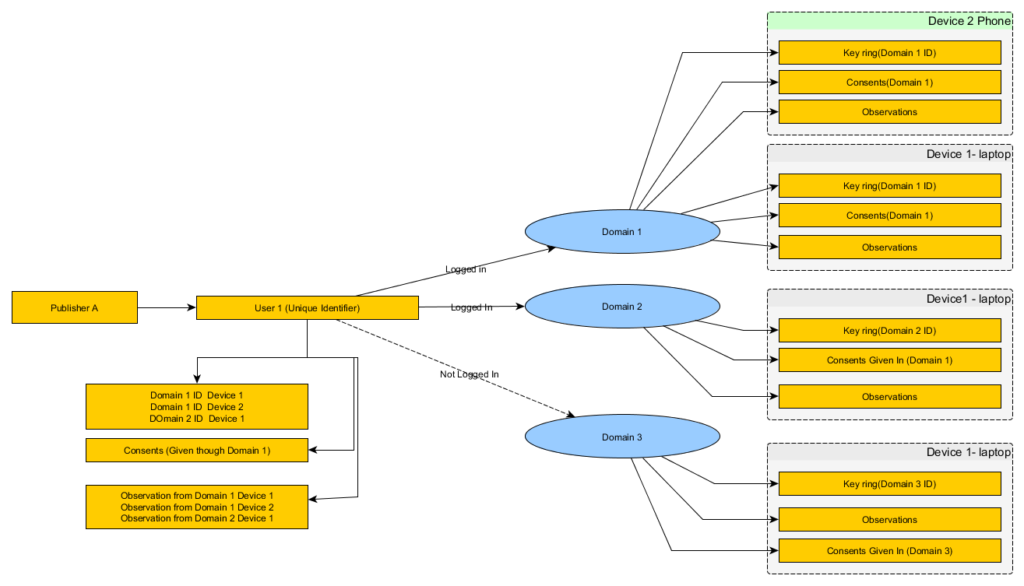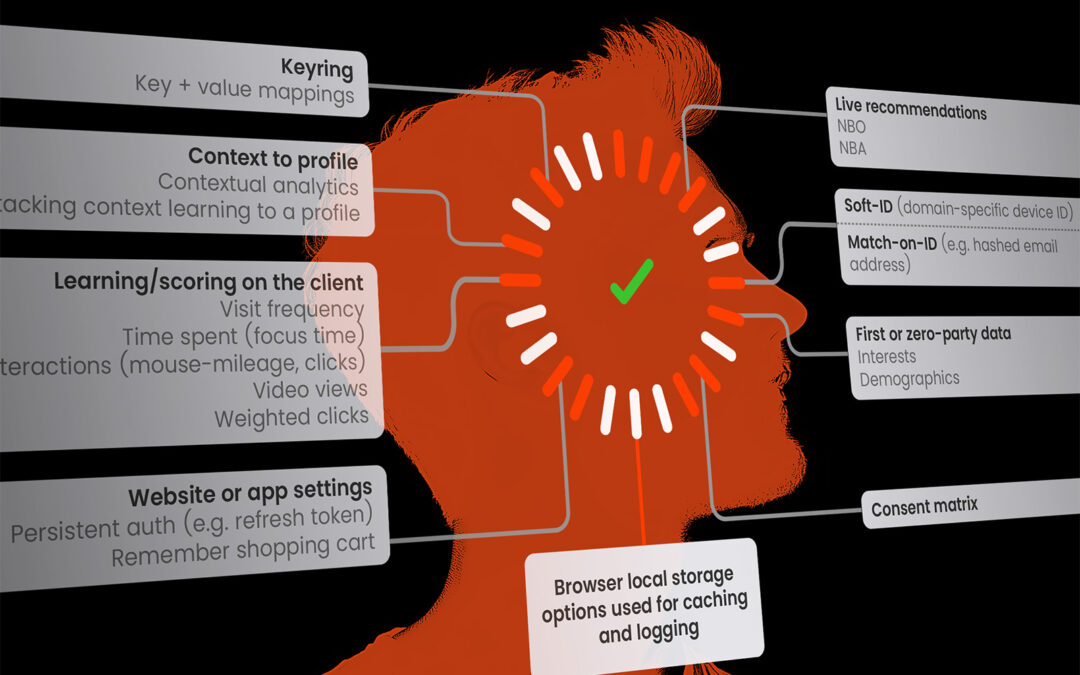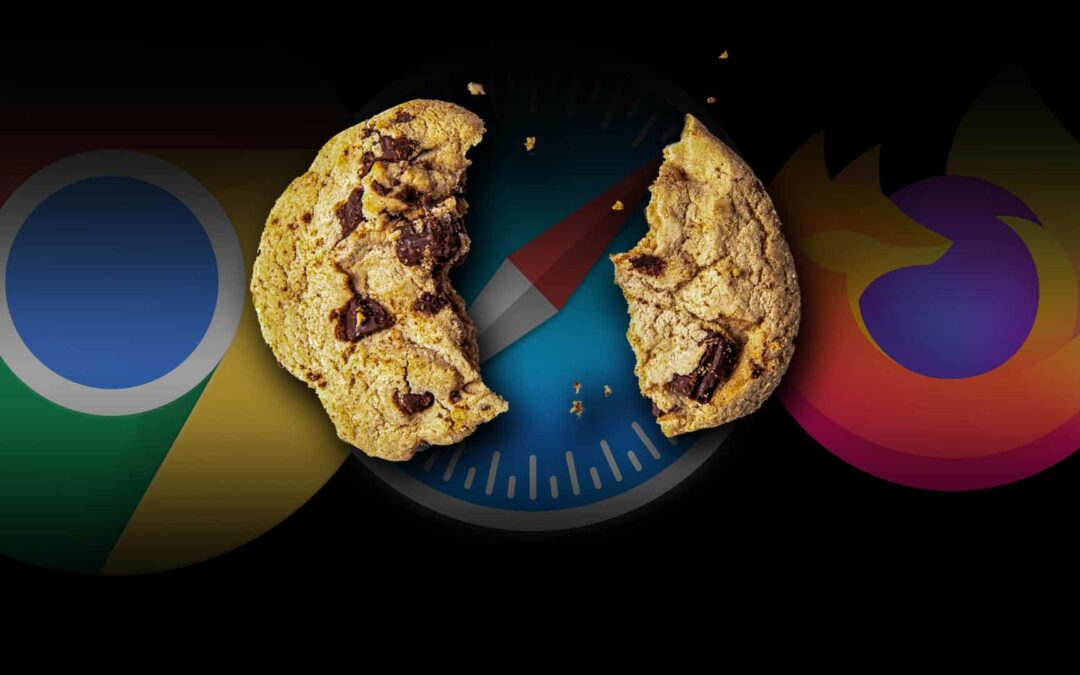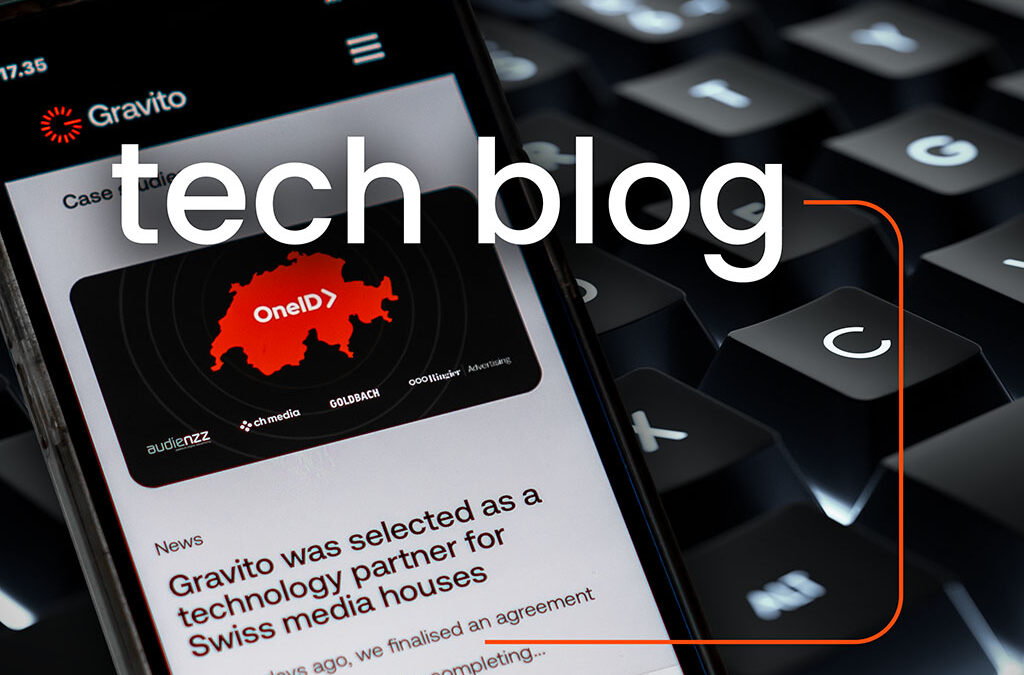This is the second part of the two part series. The first part can be accessed here
A POSSIBLE WAY FORWARD
As we discussed in the first post of this series, at Gravito, we believe in a “Privacy first, My Data” kind of approach. We have built all our services with privacy as the centerpiece. So, when we set out to solve the disappearing Third-party cookie issue, privacy was again at the center of it all. Gravito combines its first-party solution with consent collection. At any point when requesting any information from Gravito for any ID, consents are included by default.
When you start using Gravito as a solution, you always start with Gravito CMP. It’s pretty straight forward and very easy to implement by yourself. Once the CMP is in place on all your webpages, the next step would be to enable the Gravito first-party solution, where all the consents that you collect, IDs that you resolve, observations that you make about the user etc. are all collected in the first-party Context.
Assessing the Impact
Let us consider a simple use case: Erosion of Cookies on Apple devices (Safari’s). For one of our main customers in the Nordics, around 22.5% of their overall traffic is from Apple devices on any given day (Safari or Mobile Safaris). The ITP or Intelligent Tracking Prevention introduced by Apple will make sure that all third-party cookies are blocked (except the ones using storage API’s).
Unfortunately, with all these restrictions, there are no third-party cookies and related features which can be used. Even if the client-side cookie is dropped by JavaScript, the lifetime is restricted to anywhere between 24 hours (if from a known tracking website) to 7 days. This clearly means an immediate 20%+ drop in revenue if you don’t change how things work on your advertising now. (This does not include the traffic from Firefox and other privacy-first browsers like Brave etc.).
In the current ecosystem after the introduction of GDPR, your ad revenue is directly connected to the consents gathered by CMPs on your website. For the consents to stick to the domain, your best bet is the first party ID. If the current Consent Management Platform you are using uses Client-Side cookies or Local storage to store the consents, this will impact the number of times you have to show the consent modal window to collect consents. However, if you choose to do this right with Gravito CMP and its first-party solutions, it will allow you to maintain your ad revenue while also playing the Consent Game correctly.
For most of our customers who own 10’s or 100’s of domains under their publisher network, they will gradually end up with an interesting device graph which opens up so many opportunities for re-targeting.

It is very important to remember here that without that first-party cookie ID or hashed email, there will be no linkage. That being said, there are many publishers who are moving towards forcing users to login on their web pages. This approach taken by many is not just for solving the advertising issue, but also to offer premium content. This also makes it easier for privacy-settings management across publishers’ websites as well.
At Gravito, we identified that taking the first party approach will need a key-ring solution which can scale based on our customer’s needs. The key ring is already built into the API. Our multi-tiered approach, based on the maturity of the data you have on the profile, enables you to gradually build a device and user graph of your customers which is rich with data and consents. That being said, the logic required to link first-party IDs need to function at scale. Would publishers build something like this on their own? Or can they all build it? What would be a viable solution going forward?
Challenges and Opportunities
Larger and established publishers with sizable IT budgets and large-scale advertisers with data lakes already could have the infrastructure and the man-power to build some custom services to support this. ID linking could therefore potentially create a class divide between those that have capabilities and those that do not.
On the other hand, using ready-made solutions like Gravito can lead to a slow and gradual but fruitful journey in the long run. To start off with, the collection of useful and consented data based on the Unique ID across the publisher’s spectrum of webpages is a possible first step. A next step would be to open up the ID and observations to other publishers and industry but at a cost so that others can also benefit from that data that you have gathered.
Going forward, the industry definitely requires a collaborative model that is practical on different scales and is more inclusive to all types of publishers and advertisers. This will help ensure that revenues from across the advertising spectrum reach media owners. Gravito looks forward to providing this solution to publishers across the spectrum. While the focus of the publishers can be on their priorities, hooking in Gravito’s CMP and the first party solution helps them prepare for what’s coming in Privacy first web. The availability of persistent IDs, consents and observations at the client side opens up possibilities in Edge side Analytics and Targeting which we never imagined before. More about that in another blog post.
In a cookie-less world, first-party IDs would become the most effective approach to targeting and measurement.
References
- https://www.apple.com/safari/docs/Safari_White_Paper_Nov_2019.pdf
- https://www.iabseaindia.com/blog/the-role-of-first-party-ids-in-a-cookie-less-world





